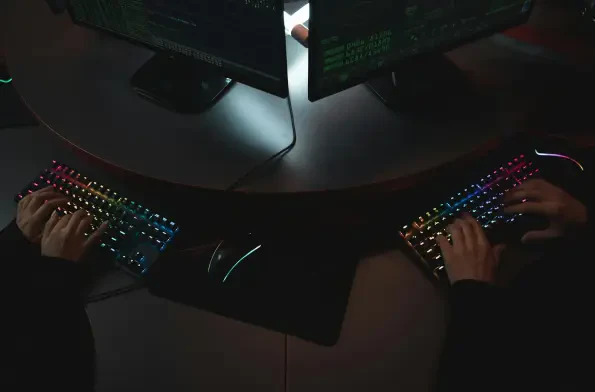In an era where digital transformation accelerates at a breathtaking pace, the hidden dangers of insider threats have emerged as a critical challenge for organizations and governments alike, demanding urgent attention. High-profile incidents, such as the case of Peter Williams, a former executive at a major U.S. defense firm who sold sensitive cyber exploits to a Russian broker for $1.3 million in cryptocurrency, reveal the catastrophic potential of betrayal from within. These breaches are not mere isolated events but symptoms of a deeper flaw in traditional security models that hinge on implied trust. With insider threats costing organizations an average of $17.4 million annually, the urgency to rethink how critical assets are protected has never been more pressing. The stakes extend beyond financial loss, threatening supply chains and national security, particularly in sectors like defense where a single lapse can have far-reaching consequences. This alarming reality sets the stage for a transformative approach to cybersecurity that prioritizes vigilance over assumption.
Understanding the Insider Threat Landscape
The Hidden Danger Within
The specter of insider threats often overshadows external cyberattacks due to the unparalleled access internal actors possess, making their potential for harm uniquely devastating. The Peter Williams incident serves as a stark reminder of this vulnerability, where a trusted executive exploited his position to sell cyber exploits worth millions on the gray market. Such betrayals highlight a troubling truth: individuals with intimate knowledge of systems and data can bypass security measures with alarming ease. Unlike external hackers who must breach fortifications, insiders already hold the keys, often facing minimal oversight. This inherent advantage allows them to inflict damage that is both swift and severe, undermining the very foundation of organizational trust. As these cases multiply, it becomes evident that the traditional reliance on loyalty or ethical behavior is insufficient to safeguard sensitive information in today’s high-stakes digital environment.
Another dimension of this danger lies in the economic incentives driving insider betrayals, which often outweigh any sense of duty or allegiance. The gray market for cyber vulnerabilities operates as a lucrative shadow economy, where exploits and data are traded for substantial sums, frequently in untraceable cryptocurrency. This financial lure creates a powerful motivator for insiders to exploit their access, as seen in cases where personal gain trumps national or corporate interests. The ease of conducting such transactions anonymously further emboldens potential offenders, reducing the perceived risk of detection. This economic arms race not only fuels insider threats but also complicates efforts to predict or prevent them, as the rewards for betrayal continue to grow. Addressing this challenge requires a fundamental shift in how access and trust are managed within organizations, moving away from assumptions of integrity toward robust, verifiable controls.
Economic and Strategic Fallout
The financial toll of insider breaches is staggering, with organizations facing an average annual loss of .4 million due to these internal attacks. Beyond the raw numbers, specific incidents like credential compromises add an average cost of 9,000 each, burdening companies with unexpected expenses that strain budgets and resources. Perhaps even more damaging is the prolonged time required to contain such breaches, often averaging 81 days. This extended period allows the harm to compound, as sensitive data may be exploited or sold during the interim, further escalating losses. These figures underscore the reality that insider threats are not just a technical problem but a profound economic burden, draining funds that could otherwise fuel innovation or growth. The persistent nature of these costs demands urgent attention to prevent internal vulnerabilities from becoming a recurring financial drain.
Equally concerning are the strategic implications of insider breaches, particularly in critical sectors where the consequences extend far beyond monetary damage. In industries like defense, a single breach can disrupt entire supply chains, compromise classified projects, and jeopardize national security on a global scale. The ripple effects of such incidents can undermine public trust in institutions and weaken a country’s strategic position, as adversaries gain access to proprietary or sensitive information. These high-stakes risks elevate insider threats to a matter of existential importance, where the failure to protect against internal actors can have geopolitical ramifications. As digital systems become increasingly integral to national infrastructure, the intersection of cybersecurity and strategic stability grows more pronounced, necessitating a robust framework to shield against the profound dangers posed by those within.
The Case for Zero Trust Architecture
Breaking the Trust Barrier
At the heart of a transformative response to insider threats lies Zero Trust Architecture (ZTA), a framework that fundamentally rejects the notion of implied trust in favor of rigorous, continuous verification. Unlike traditional models that assume safety once a user is inside the network, ZTA operates on the principle of “never trust, always verify,” ensuring that every individual and device must prove their legitimacy at every step. Endorsed by NIST guidelines (SP 800-207), this approach eliminates the blind spots that insiders often exploit, requiring identity checks regardless of a user’s role or location. By dismantling the outdated assumption that internal actors are inherently safe, ZTA redefines cybersecurity as a proactive discipline focused on constant validation. This shift is not just a technical adjustment but a cultural one, urging organizations to prioritize skepticism over convenience in their security posture.
A cornerstone of ZTA is the Least Privilege Principle, which restricts access to the absolute minimum necessary for a user to perform their duties, and only for the shortest duration required. This tightly controlled access model ensures that even privileged users cannot overstep their boundaries without triggering scrutiny, significantly reducing the window of opportunity for malicious actions. By limiting exposure, organizations can contain potential damage, as an insider with restricted permissions has far less capacity to compromise critical systems or data. This principle also fosters a dynamic environment where access rights are regularly reviewed and adjusted based on evolving needs, preventing the accumulation of unnecessary privileges over time. Implementing such a granular approach marks a departure from the broad, trust-based permissions of the past, aligning security practices with the realities of modern threats.
Modern Tools for Modern Threats
Complementing ZTA are advanced tools like Data Security Posture Management (DSPM), which plays a vital role in identifying and protecting sensitive information across complex multi-cloud environments. As organizations increasingly rely on distributed systems, the risk of data exposure grows, particularly when insiders inadvertently or maliciously mishandle critical assets. DSPM offers visibility into where sensitive data resides and how it’s accessed, enabling proactive measures to shield it from unauthorized eyes. This capability is essential in an era where digital attack surfaces expand daily, driven by the integration of cloud computing and other technologies. By mapping out vulnerabilities and enforcing protective policies, DSPM empowers organizations to stay ahead of potential breaches, ensuring that even internal actors cannot easily exploit systemic weaknesses in sprawling digital infrastructures.
Another critical tool is Data Loss Prevention (DLP), which addresses emerging risks such as Shadow AI—the unauthorized use of AI tools by employees that can inadvertently expose data. DLP systems monitor and block the sharing of sensitive information with external platforms, preventing leaks that could stem from negligence or malice. This is particularly relevant as the adoption of unapproved technologies by staff becomes more common, creating hidden vulnerabilities that traditional security measures often overlook. By integrating DLP with ZTA, organizations can create a multi-layered defense that not only verifies access but also safeguards data at every touchpoint. These adaptive solutions reflect the need to evolve alongside threats, ensuring that cybersecurity strategies remain relevant in a landscape where innovation often outpaces regulation. Together, these tools fortify the fight against insider threats, tackling both intentional and accidental risks.
Leveraging AI and Automation
Smarter Detection with Behavioral Analytics
Artificial Intelligence (AI) and Machine Learning (ML) are reshaping the battle against insider threats through innovations like User and Entity Behavior Analytics (UEBA), which detect anomalies in real time. By establishing behavioral baselines for users and devices, UEBA systems can flag suspicious activities—such as accessing unauthorized files or altering permissions—long before they escalate into full-blown breaches. This capability dramatically reduces containment times, often shrinking response windows from days to mere minutes, a crucial advantage when every moment of delay amplifies damage. Unlike traditional monitoring that relies on static rules, UEBA adapts to evolving patterns, making it uniquely suited to identify subtle deviations that might indicate malicious intent. As insider threats grow more sophisticated, this intelligent detection becomes an indispensable asset in maintaining security across dynamic digital environments.
The urgency of adopting AI-driven tools like UEBA is heightened by the fact that attackers are also leveraging similar technologies to refine their tactics, creating a high-stakes technological race. Insiders with malicious intent can use AI to mask their activities or exploit vulnerabilities at an accelerated pace, challenging defenders to keep up. By integrating ML into cybersecurity frameworks, organizations can anticipate and neutralize threats with greater precision, identifying patterns that human analysts might miss. This proactive stance not only mitigates the risk of insider breaches but also builds resilience against a broader spectrum of cyber dangers. The shift toward such automated, intelligent systems underscores a critical truth: staying ahead of internal threats requires not just vigilance but also the strategic use of cutting-edge tools to outmaneuver adversaries in an ever-evolving landscape.
Staying Ahead of the Curve
The broader movement toward proactive, automated defenses signals a fundamental change in how cybersecurity must be approached in today’s complex digital realm. No longer can organizations afford to react after a breach occurs; instead, systems like ZTA and AI-powered analytics enable preemptive action by identifying risks before they materialize into damage. Continuous monitoring, a hallmark of these modern strategies, ensures that potential insider threats are caught early, whether they stem from malice or negligence. This forward-thinking mindset aligns with the growing recognition that digital vulnerabilities are multiplying alongside technological advancements, necessitating defenses that evolve in tandem. Automation, in particular, frees up human resources to focus on strategic oversight, while machines handle the relentless task of sifting through vast data streams for signs of trouble.
AI-driven monitoring stands as a cornerstone of these contemporary strategies, offering a scalable solution to protect against the nuanced nature of insider threats. As digital ecosystems expand, the volume of interactions and access points grows exponentially, making manual oversight impractical. AI tools provide the capacity to analyze this deluge of activity in real time, spotting irregularities that could indicate an insider preparing to act. This not only enhances security but also builds confidence in an organization’s ability to safeguard its most valuable assets. Looking back, the adoption of such technologies marked a pivotal moment in cybersecurity, as defenders embraced automation to counter the accelerating sophistication of threats. Reflecting on this evolution, the path forward involves deepening investments in intelligent systems and fostering a culture of constant adaptation to ensure that the lessons of past breaches inform stronger, more resilient defenses.













